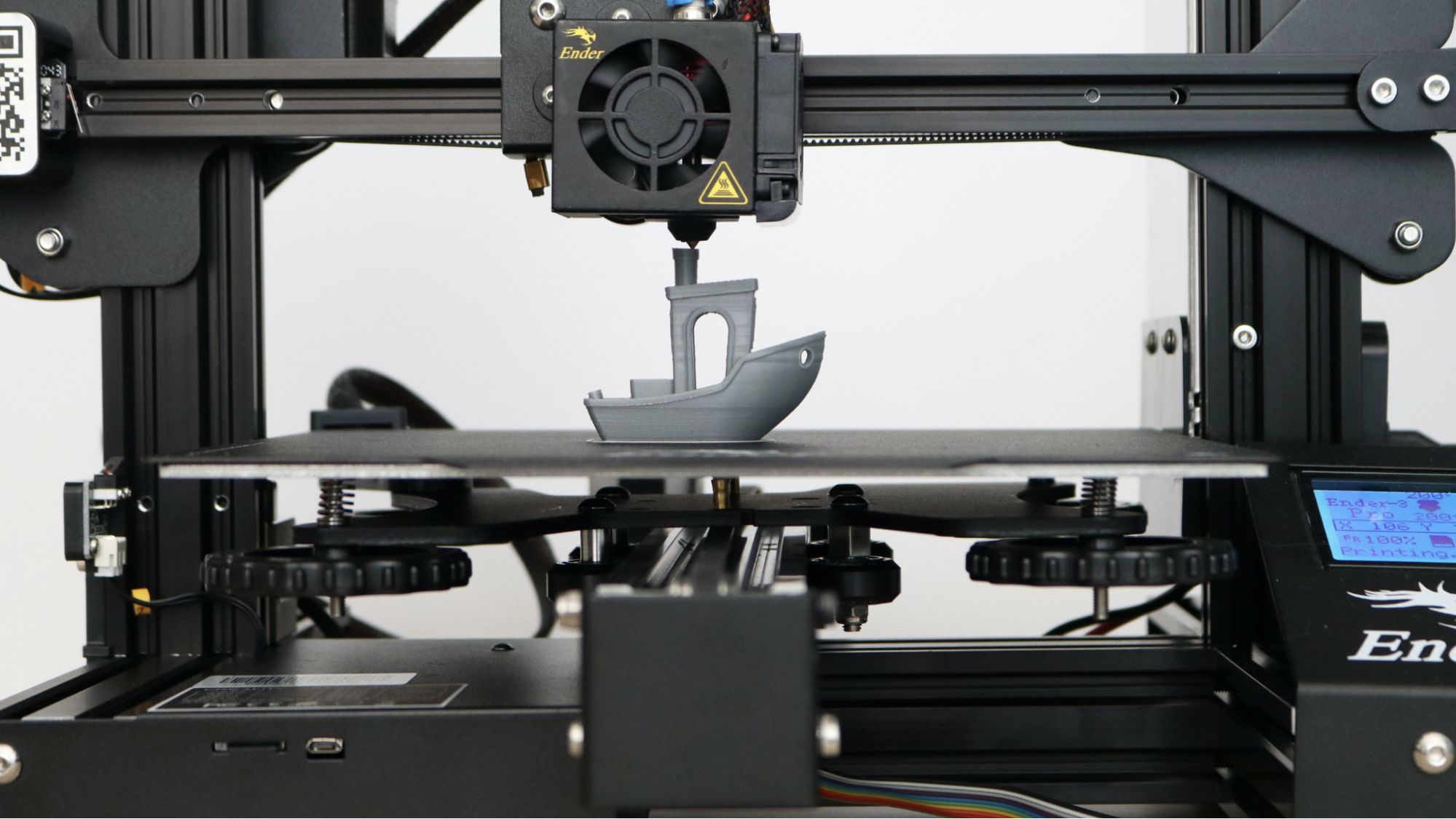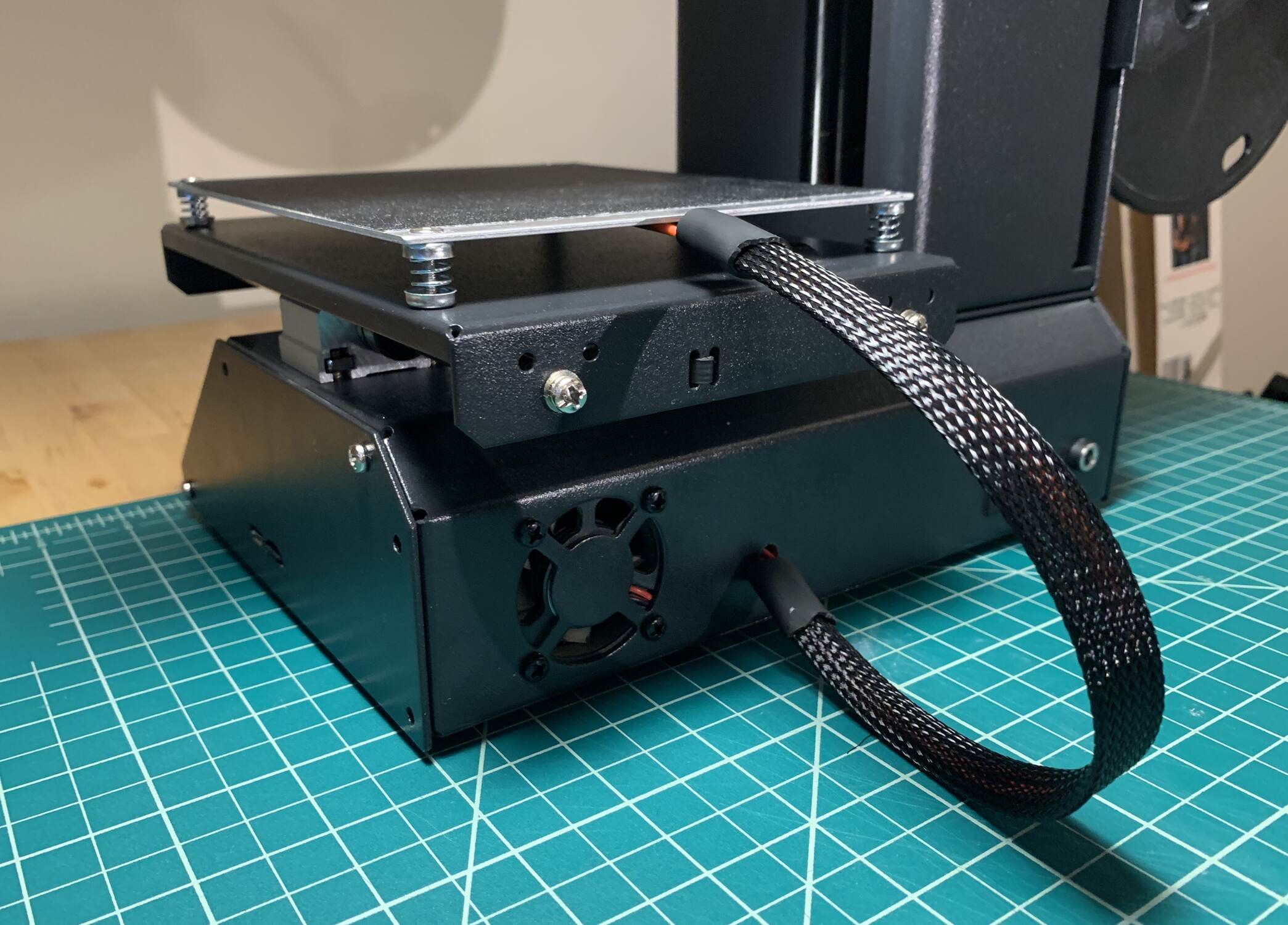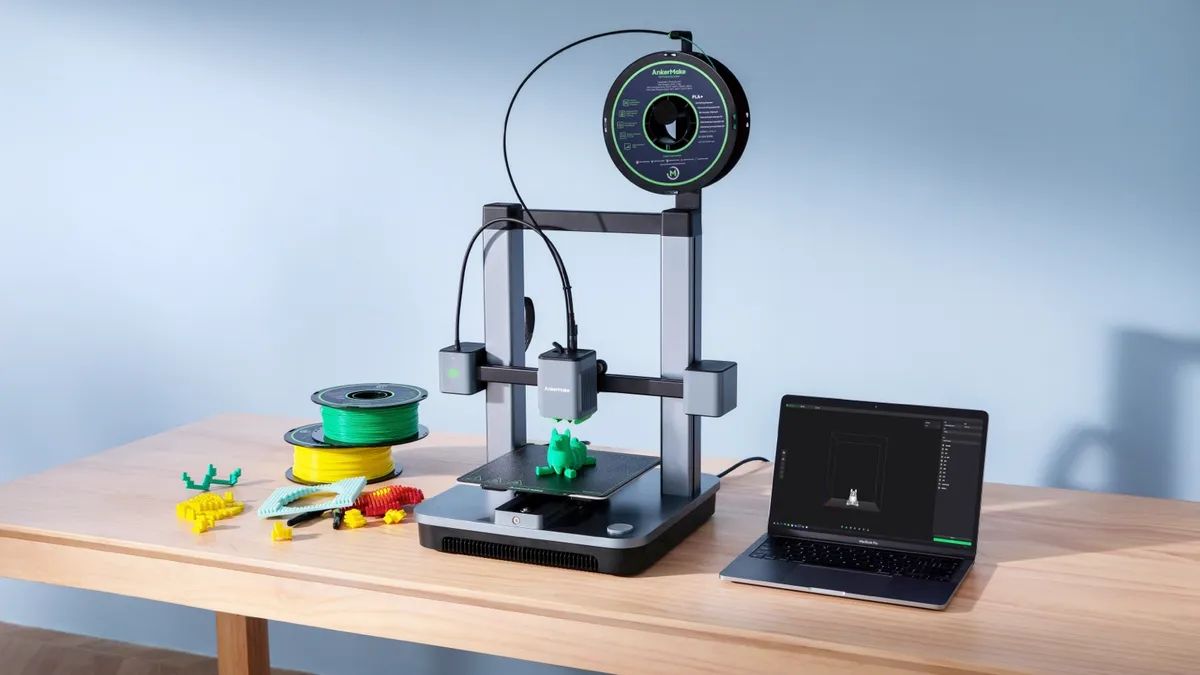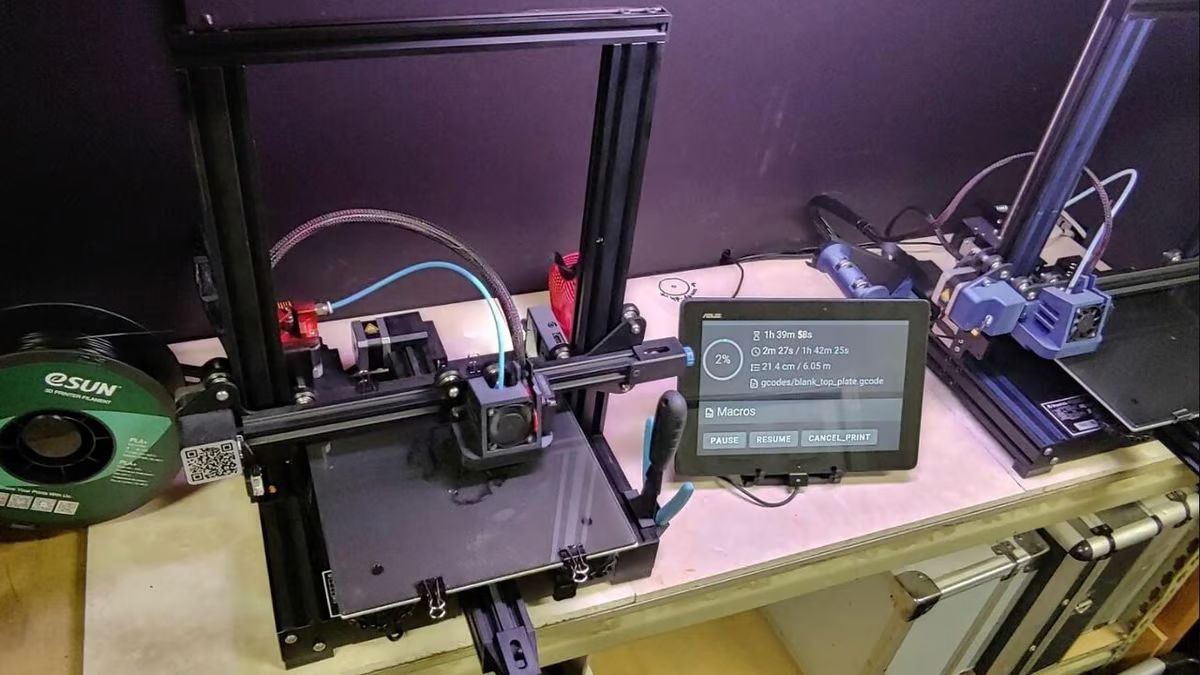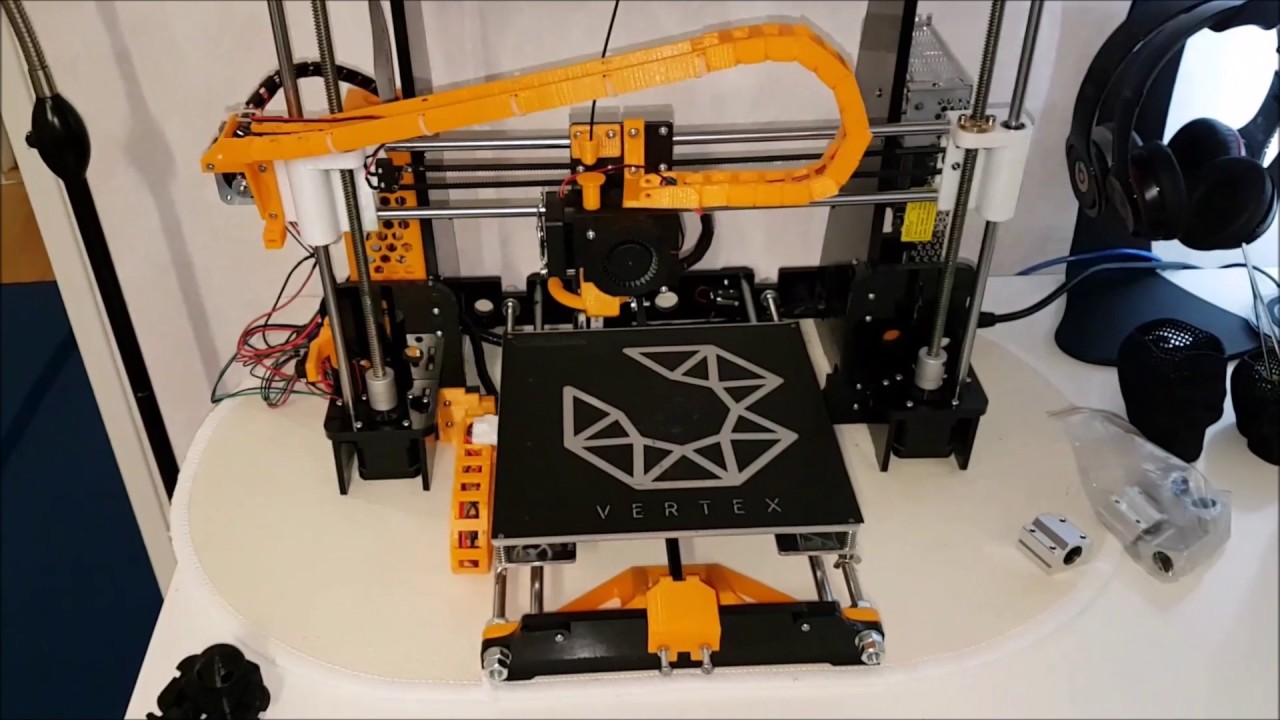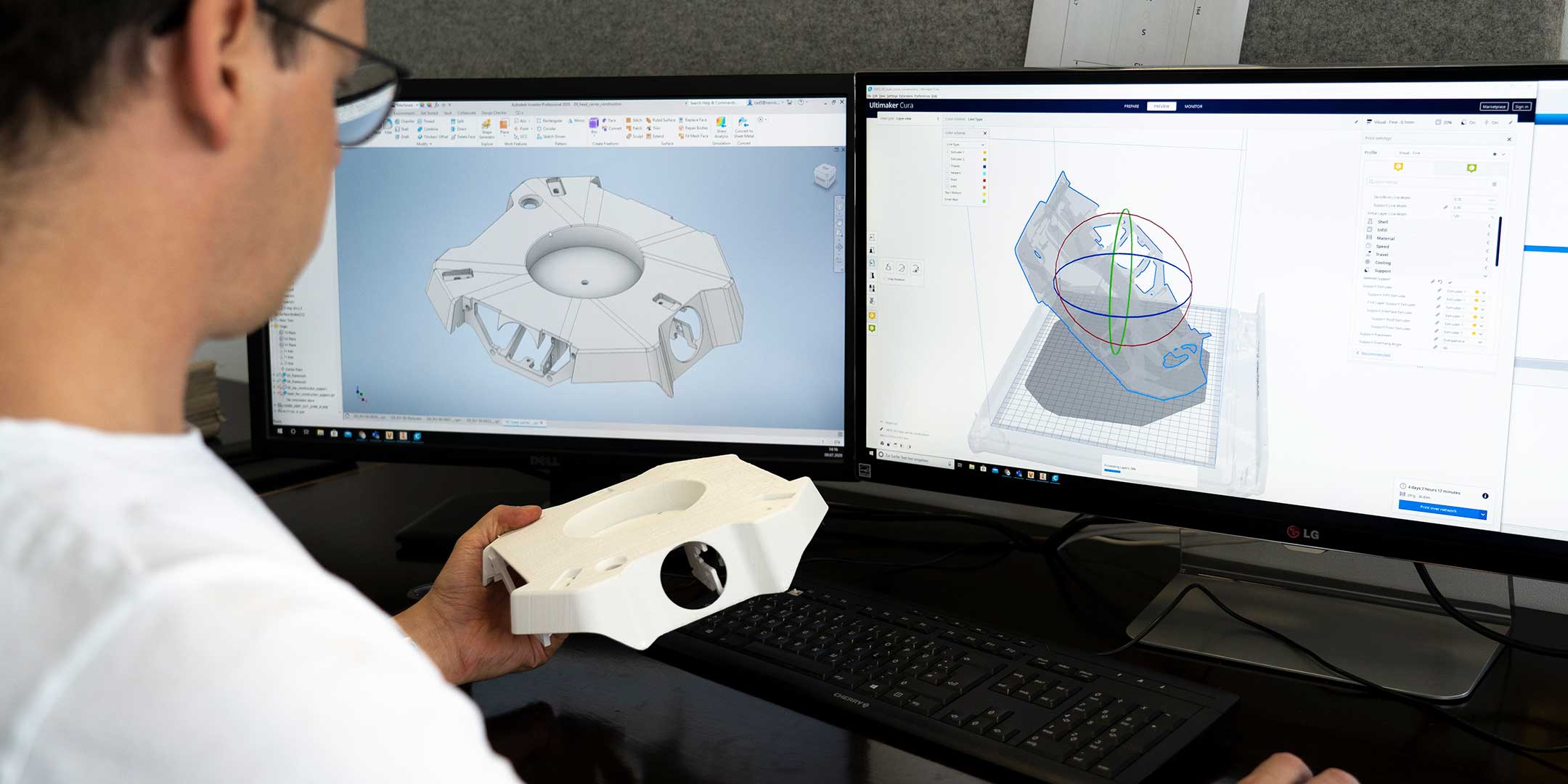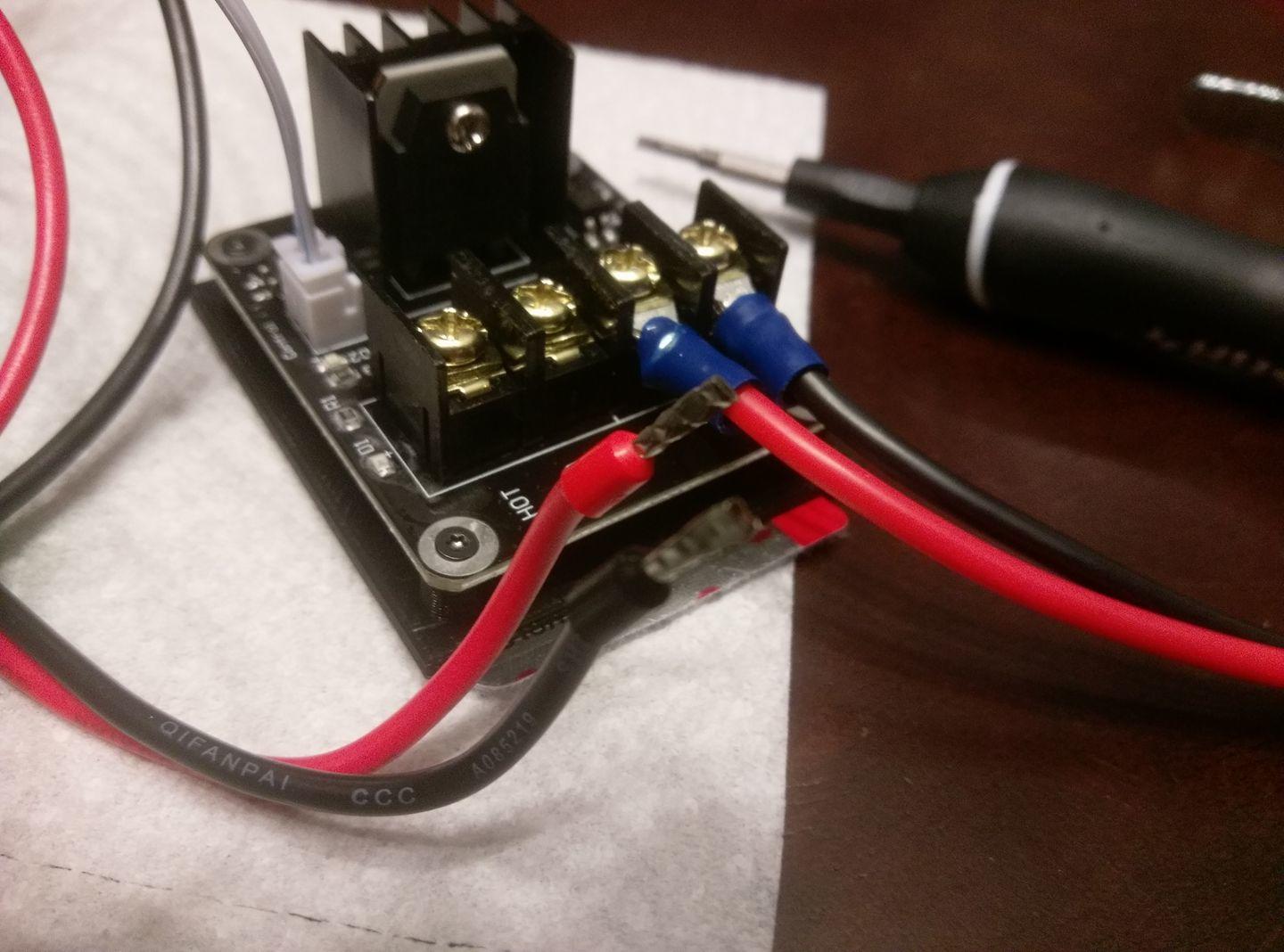Introduction
Connecting your computer to a 3D printer opens up a world of possibilities for creating and bringing your digital designs to life. Whether you are a hobbyist or a professional in the field of 3D printing, understanding the process of connecting your computer to the printer is crucial for a smooth and successful printing experience.
In this guide, we will walk you through the steps required to connect your computer to a 3D printer. We will cover everything from gathering the necessary materials to troubleshooting common issues, ensuring that you have all the information you need to get started.
Before we dive into the technical aspects, it’s important to briefly discuss the benefits of connecting your computer to a 3D printer. By establishing this connection, you gain greater control over the printing process, allowing you to adjust settings, monitor progress, and troubleshoot issues directly from your computer.
Additionally, connecting your computer to a 3D printer allows you to take advantage of various software programs and slicers that streamline the printing workflow. These tools enable you to prepare and optimize your 3D models for printing, ensuring optimal results.
Now that we’ve set the stage, let’s proceed to the first step: gathering the necessary materials. By ensuring you have all the required components, you’ll be well-prepared to move forward with the connection process.
Step 1: Gathering the necessary materials
Before you can connect your computer to a 3D printer, you’ll need to gather a few essential materials. Here’s a list of what you’ll typically need:
- A 3D printer: This may seem obvious, but it’s worth mentioning. Make sure you have a functioning 3D printer that is compatible with your computer.
- A USB cable: Most 3D printers require a USB connection to establish communication with your computer. Check the specifications of your printer to determine the type of USB cable it requires.
- A computer: Any computer that runs on Windows, macOS, or Linux can be used to connect to a 3D printer. Ensure that your computer meets the minimum system requirements for the printer software you plan to use.
- Printer software: Depending on the brand and model of your 3D printer, you’ll need to download and install the appropriate software from the manufacturer’s website. This software will allow you to control and monitor the printing process.
- 3D modeling software: If you plan to create or modify 3D models, you’ll need software that allows you to design and edit these models. Popular options include Autodesk Fusion 360, Tinkercad, and Blender.
- A stable surface: To ensure the stability of your 3D printer during the printing process, place it on a sturdy and level surface.
- Safety equipment: While not directly related to connecting your computer to a 3D printer, it is essential to prioritize safety. Consider wearing safety glasses, gloves, and a dust mask when operating the printer.
By gathering these materials beforehand, you’ll have everything you need to proceed with the connection process smoothly. Next, we’ll explore the compatibility between your computer and the 3D printer in Step 2.
Step 2: Checking compatibility
Before connecting your computer to a 3D printer, it’s important to ensure that they are compatible with each other. Checking compatibility will help avoid any potential issues that may arise during the connection process. Here are a few key aspects to consider:
1. Operating System Compatibility: Determine whether your 3D printer’s software is compatible with the operating system running on your computer. Most printers support multiple operating systems such as Windows, macOS, and Linux. Check the manufacturer’s website for specific system requirements and download the appropriate software for your operating system.
2. USB Port Compatibility: Confirm that your computer has a USB port that matches the requirements of your 3D printer. USB 2.0 or 3.0 ports are the most common options. If your computer does not have a compatible USB port, you may need to use an adapter or hub to establish a connection.
3. Printer Driver Installation: Some 3D printers require the installation of specific printer drivers to establish a proper connection with your computer. Check the manufacturer’s instructions to see if you need to install any drivers, and follow the provided guidelines to ensure a successful installation.
4. Software Compatibility: Ensure that the software you plan to use for 3D modeling and printing is compatible with your 3D printer. Different printers may require different slicers and software programs to prepare your 3D models for printing. Check the manufacturer’s or software provider’s website for compatibility information and recommended software options.
By performing these compatibility checks, you can be confident that your computer and 3D printer are able to communicate effectively. Once you’ve verified compatibility, you’re ready to move on to the next step: preparing your computer for the connection process.
Step 3: Preparing the computer
Before you can connect your computer to a 3D printer, it’s essential to take a few preparatory steps to ensure a smooth and successful connection. Here are the key tasks involved in preparing your computer for the connection process:
1. Update Operating System: Make sure your computer’s operating system is up to date. Installing the latest updates and patches will ensure that your computer is equipped with the necessary drivers and software components to support the connection with your 3D printer.
2. Install Printer Software: Download and install the 3D printer software provided by the manufacturer. This software acts as the control center for your printer, allowing you to manage print settings, monitor progress, and troubleshoot any issues that may arise. Follow the manufacturer’s instructions for the installation process.
3. Calibrate Your Printer: Some printers require calibration to ensure optimal printing performance. This process involves adjusting the printer’s settings to ensure precise and accurate printing. Consult your printer’s manual or manufacturer’s website for instructions on how to calibrate your specific model.
4. Configure Printer Settings: Once the software is installed, configure the printer settings to match your specific requirements. Set parameters such as print bed size, extruder temperature, and filament settings according to the type of material you will be using. Consult the manufacturer’s documentation for guidance on configuring these settings.
5. Set File Locations: Determine where your 3D printer software will save the files for printing. It is recommended to create a dedicated folder to keep your 3D models organized. This will make it easier for you to locate and manage your files for future prints. Set the file location within the settings of your printer software.
By following these steps to prepare your computer, you’ll ensure that it is ready for the connection process. Once your computer is fully prepared, you’re ready to install the 3D printer software and create the connection between your computer and the printer, which we will cover in the next step.
Step 4: Installing the 3D printer software
To connect your computer to a 3D printer, you’ll need to install the specific software provided by the manufacturer. This software serves as the bridge between your computer and the printer, allowing you to control and monitor the printing process. Follow these steps to install the 3D printer software:
1. Locate the Software: Visit the manufacturer’s website and locate the section for downloading the software. Look for the software that corresponds to your printer model and operating system.
2. Download the Software: Click on the download link provided and save the software file to your computer’s hard drive. Make sure to choose the appropriate version for your operating system (Windows, macOS, or Linux).
3. Run the Installer: Once the download is complete, locate the file on your computer and run the installer. Follow the on-screen instructions to proceed with the installation process. You may need to accept the software license agreement and choose an installation location.
4. Set Preferences: Once the software is installed, launch the program and access the settings or preferences menu. Configure the software based on your printer’s specifications, including settings such as print bed size, filament type, and extruder temperature. Consult the manufacturer’s documentation or online resources for guidance on how to set these preferences.
5. Connect the Printer: After setting the preferences, connect the 3D printer to your computer using a compatible USB cable. Ensure that the printer is powered on and recognized by your computer. The software should detect the printer and establish a connection automatically. If not, consult the software’s troubleshooting guide or the manufacturer’s support resources for assistance.
By following these steps, you will successfully install the 3D printer software and create a connection between your computer and the printer. This connection opens up a world of possibilities for creating and bringing your digital designs to life. Now, it’s time to proceed to the next step: connecting your computer to the 3D printer.
Step 5: Connecting the computer to the 3D printer
With the 3D printer software installed on your computer, it’s time to establish a connection between your computer and the 3D printer. Follow these steps to connect the two devices and begin the printing process:
1. Power on the Printer: Make sure your 3D printer is powered on and in a ready state. Check that all cables are properly connected and secured.
2. Open the Software: Launch the 3D printer software on your computer. The software interface will differ based on the manufacturer and model, but there should be a clear option or button to connect to the printer. Look for a “Connect” or “Connect to Printer” button and click on it.
3. Select the Printer: In the software interface, you will see a list of available printers. Choose your 3D printer from the list and select it. This will establish the connection between your computer and the printer.
4. Verify Connection: Once you have selected the printer, the software should display the connection status. It may show as “Connected” or indicate the printer’s name to confirm a successful connection. This allows you to communicate and control the printer directly from your computer.
5. Test Communication: To ensure that the connection is established correctly, try sending a test print or a simple 3D model to the printer. The software should send the printing instructions to the printer, and you should see the progress and status updates in the software interface.
6. Monitor and Control: With the connection established, you can now monitor the printer’s progress, adjust settings, and troubleshoot issues directly from your computer. The software will provide you with a range of options and controls to optimize your printing experience.
By following these steps, you will successfully connect your computer to the 3D printer, giving you the ability to control and manage the printing process seamlessly. Now, you’re ready to move on to the final step: troubleshooting common issues that may arise during the printing process.
Step 6: Troubleshooting common issues
While connecting your computer to a 3D printer opens up exciting possibilities, you may encounter some common issues along the way. Here are a few troubleshooting tips to help you overcome these challenges:
1. Check Cable Connections: Ensure that all cables are securely connected to both your computer and the 3D printer. Loose or faulty connections can cause communication failures.
2. Update Firmware: Check if there are any firmware updates available for your 3D printer. Installing the latest firmware can resolve compatibility issues and provide enhancements.
3. Restart Printer and Computer: Sometimes, a simple restart can resolve connectivity issues. Turn off both the printer and your computer, then power them back on and attempt to reconnect.
4. Reinstall Printer Software: If the connection problem persists, try reinstalling the 3D printer software on your computer. Uninstall the existing software, download the latest version from the manufacturer’s website, and install it again.
5. Ensure Proper Printer Settings: Double-check the printer settings in the software to ensure they match the specifications of your printer and the materials you are using. Incorrect settings can lead to poor print quality or failed prints.
6. Clear Print Queue: If you have multiple print jobs in the queue, clear them out and start fresh. A long list of pending prints can create confusion and disrupt the connection between your computer and the printer.
7. Use Quality Filament: Low-quality or improperly stored filament can cause feeding issues and clog the extruder. Ensure that you are using high-quality filament and store it in a dry and controlled environment.
8. Consult Manufacturer’s Support: If you have exhausted these troubleshooting steps and the issues persist, reach out to the manufacturer’s support team. They will have the expertise to guide you through specific issues related to your 3D printer model.
By following these troubleshooting tips, you can overcome common issues that may arise when connecting your computer to a 3D printer. Remember, patience and persistence are key in troubleshooting, and don’t hesitate to seek assistance when needed. With these issues addressed, you are well on your way to enjoying the full potential of your 3D printer.
Conclusion
Congratulations! You’ve successfully learned how to connect your computer to a 3D printer. By following the steps outlined in this guide, you’ve gained the knowledge and skills necessary to establish a seamless connection and begin your 3D printing journey.
We started by gathering the necessary materials, including the 3D printer itself, USB cables, and the required software. Next, we checked the compatibility between your computer and the 3D printer to ensure a smooth connection. Then, we prepared your computer by updating the operating system, installing the 3D printer software, and configuring printer settings.
After the preparation, we moved on to the actual connection process. By powering on the printer, opening the software, and selecting the printer, you established a direct communication channel between your computer and the 3D printer. You also learned how to monitor and control the printing process from your computer.
Lastly, we discussed common troubleshooting tips to help you overcome any obstacles that may arise during the printing process. By checking cable connections, updating firmware, and double-checking printer settings, you can address most common issues efficiently.
Remember, 3D printing is a learning experience, and it’s normal to encounter challenges along the way. With patience, perseverance, and the knowledge gained from this guide, you’ll be able to troubleshoot and overcome any obstacles that come your way.
Now that you have successfully connected your computer to a 3D printer, it’s time to unleash your creativity and explore the limitless possibilities of 3D printing. Whether you’re creating prototypes, functional parts, or artistic designs, you have the power to bring your ideas to life in three dimensions.
Embrace the exciting world of 3D printing, and let your imagination soar as you continue to learn, experiment, and refine your skills. Happy printing!









